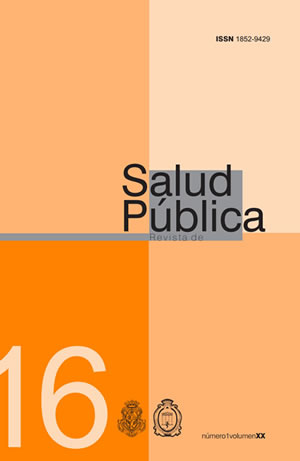THE EXPLOSION OF ZIKA VIRUS
DOI:
https://doi.org/10.31052/1853.1180.v20.n1.13731Keywords:
Zika Virus InfectionAbstract
Alexander Haddow fue el científi co que identifi có por primera vez el virus de Zika, en 1947, en el bosque tropical homónimo, ubicado en la región de Entebbe, a 23 kilómetros de Kampala, la capital de Uganda. La Fundación Rockefeller fi nanció en 1936 un puesto de investigación en el bosque de Zika destinado al estu- dio de la fi ebre amarilla. Más tarde se convertiría en un importante laboratorio sobre enfermedades tropicales. Los investigadores se dieron cuenta, a mediados de la década de 1940, que las distintas especies de mosquitos están activas en diferentes elevaciones, por lo que decidieron construir esta enorme estructura de acero en medio del bosque para llevar a cabo sus experimentos de fi ebre amarilla, Haddow, médico escocés, era el director del proyecto.Downloads
References
Capeding M.R. et.al, Clinical effi cacy and safety of a novel tetravalent dengue vac-cine in healthy children in Asia: a phase 3, randomised, observer-masked, placebo-controlled trial ; Volume 384, Issue 9951, 11–17 October 2014, Pages 1358–1365.
Coudeville L, Baurin N. Potential impact of dengue vaccination: insights from the fi rst large-scale effi cacy trials. Poster presented at 64th ASTMH Annual Meeting - October 25-29, 2015, Philadelphia, Pennsylvania, USA. OMS.
Global strategy for dengue prevention and control 2012-2020.ISBN 978 92 4 150403 4 (NLM classifi cation: WC 528)Pizzi, Sanchez, Huck, Tomas. Artrópodos. Calentamiento global. Control de pla-gas. Editorial Rotagraf. Córdoba, 2012, pág. 17-28; 139-145.
Villar L, Dayan GH, Arredondo-Garcia JL, Rivera DM, Cunha R, Deseda C et al. Effi cacy of a tetravalent dengue vaccine in children in Latin America.N Engl J Med. 2015.
Downloads
Published
Issue
Section
License
Copyright (c) 2016 Escuela de Salud Pública y Ambiente. Facultad de Ciencias Médicas. Universidad Nacional de Córdoba

This work is licensed under a Creative Commons Attribution-NonCommercial 4.0 International License.
Authors who publish with this journal agree to the following terms:
- Authors retain copyright and grant the journal right of first publication with the work simultaneously licensed under a Creative Commons Attribution License which allows the work to be copied, distributed, exhibited and interpreted as long as it is not done for commercial purposes.
- Authors are able to enter into separate, additional contractual arrangements for the non-exclusive distribution of the journal's published version of the work (e.g., post it to an institutional repository or publish it in a book), with an acknowledgement of its initial publication in this journal.
- Authors are permitted and encouraged to post their work online (e.g., in institutional repositories or on their website) after the publication process. (See The Effect of Open Access). (See The Effect of Open Access).







